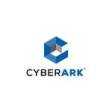CyberArk addresses least privilege and infrastructure integrity at federal agencies
 Newton, MA-based CyberArk Software Ltd., the company that protects organizations from cyber attacks that have made their way inside the network perimeter, released a white paper on March 25 that addresses the three critical areas of least privilege control for federal agencies moving to Phase 2 of the Continuous Diagnostics and Mitigation (CDM) program. The paper, which can be downloaded for free, is in response to a Request for Information issued by the U.S. General Services Administration (GSA).
Newton, MA-based CyberArk Software Ltd., the company that protects organizations from cyber attacks that have made their way inside the network perimeter, released a white paper on March 25 that addresses the three critical areas of least privilege control for federal agencies moving to Phase 2 of the Continuous Diagnostics and Mitigation (CDM) program. The paper, which can be downloaded for free, is in response to a Request for Information issued by the U.S. General Services Administration (GSA).
The CDM program, initiated by the U.S. Dept. of Homeland Security, provides federal agencies with guidance on improving the cyber security of their networks. Phase 2 of the program, called Least Privilege and Infrastructure Integrity, ensures that the principle of least privilege, which limits user access to the minimal level that will allow normal functioning, is enforced on networks. The CyberArk white paper provides federal agencies with guidance on the three key areas of least privilege and the solutions that address the most common privileged account vulnerabilities.
“Unsecured privileged accounts represent the largest security vulnerability government organizations face today. In the hands of an external attacker or malicious insider, privileged accounts allow attackers to take full control of an organization’s IT infrastructure, disable security controls, steal confidential information, commit fraud and disrupt operations,” said John Worrall, Chief Marketing Officer, CyberArk. “Enforcing the principle of least privilege outlined in the CDM program is an important step for federal agencies to take to harden their systems and protect against cyber attacks.”
Three Key Areas of Least Privilege
The CyberArk white paper outlines the three most critical areas of least privilege enforcement outlined in Phase 2 of the CDM program and how federal agencies can comply:
- Manage Security-Related Behavior: To secure against intentional and unintentional actions that inflict damage, federal agencies need to employ expert privileged account security intelligence that can identify previously undetected anomalous privileged account and user behavior.
- Manage Credentials and Authentication: To reduce the loss of confidentiality, integrity and availability of data through credential exploitation, federal agencies need to secure, manage, and track the use of all privileged credentials – these accounts provide broad access to all applications, systems and devices. Agencies must secure these credentials across all of their forms, including privileged credentials and passwords, SSH keys, and hard-coded and embedded passwords. Agencies must also secure these accounts regardless of location: on premise, in the cloud, across operating systems, databases, application, network devices and other systems.
- Manage Account Access/Manage Privileges: To minimize the loss of data through poor account management, agencies need to ensure that users granted access to privileged accounts receive only the level of clearance needed for their specific job. Native OS such as Microsoft and Unix cannot delegate privileges and authority with sufficient granularity.
Source: CyberArk







